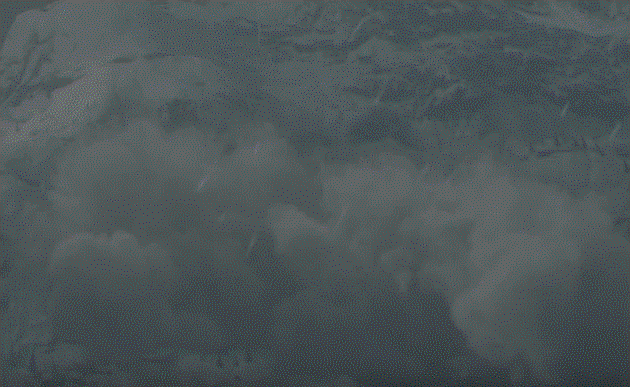Rise of the Tomb Raider: a great game made like a movie
Whether it’s the product of admiration or a heel-nipping inferiority complex, major video games are becoming more and more like movies, and not just with their ballooning budgets. In the best cases, creators are questioning their storytelling methods, and considering which aspects of film are truly desirable in a medium that thrives on players, not actors. Few developers are as well equipped to wrestle with those questions as Crystal Dynamics, the modern custodians of Tomb Raider and Lara Croft - the closest thing games have to, well, a leading actress.
The quirks of a large game developer are easy to spot in the big concrete case that houses Crystal Dynamics in California, but its influences and aspirations are only brought into clear view once you play its latest game, Rise of the Tomb Raider. Throughout my visit to the studio, several members of Crystal Dynamics carve some time out to discuss the hard work that’s gone into the game’s extravagant graphics, the research behind its storyline and the philosophy powering its decrepit crypt puzzles. As they touch on each element, all crucial to the game’s success, I see a studio harnessing the useful properties of filmmaking, without being lured off-track into an awkward, barely interactive hybrid.
Lara Croft herself is a beacon of how Crystal Dynamics has shaped itself around the Tomb Raider franchise. Her archery skills and knack for obliterating vases aren’t as scrutinized these days as her performance - how she walks, runs, jumps and screams at the icy edge of a disintegrating cliff. We dwell on how snow clings to her hair, how her eyes widen with defiant fire, how she's dirtied in an environment that is essentially made for only her to explore and react to. Lara is a virtual actor on the world’s most detailed stage, making Camilla Luddington - the graceful but steely voice you hear – the role-player inside the role-player. And it needed some stunt work: to capture Lara’s trudging through stubborn banks of snow, her real-life body had to stomp over squishy foam blocks in motion-capture gear. Acting is truly the most glamorous of professions.
While Lara dominates the screen for the most part, Rise of the Tomb Raider occasionally cedes its spectacle to the environment. When Lara takes a step up a frigid Siberian mountain, the Xbox One takes care of figuring out how her footprints deform the snow. But when an avalanche comes rushing down from a distant peak, in a huge billowing wave of snow and clouds, you’d be right to think it looks a little too good to be real. It’s not. For a few key moments, like the game’s crackling opening, Crystal Dynamics uses an old-fashioned technique with some literal Hollywood special effects.

The avalanche, it turns out, is really just a pre-made effect, animated to occupy the anticipated 3D space of the scene (all of the cutscenes in Rise of the Tomb Raider are rendered on the fly) but carefully integrated and then played back to appear seamless. It certainly didn’t look this good in the pre-2000 days of Final Fantasy 7, where 3D objects were placed on top of still images and the odd video. Using a special effects program called Houdini, which has been used to create effects for films like Marvel’s Guardians of the Galaxy, Crystal Dynamics unleashes an incredibly detailed wave of careening snow - arguably too detailed to be delivered by a console in real-time with gameplay - and carefully frames it in the scene. This compositing trick is only used a few times throughout the game in key moments that call for an awe-inspiring and convincing bit of cataclysm, without changing the game’s visual style completely.
The loud, crashy moments make for an obvious movie parallel, but it’s in the quiet recesses of Rise of the Tomb Raider that you see more of its film-like construction. The tombs themselves, which have become far more elaborate since the previous game (tombs are in the name, after all), are lit like sets, with bright spots meant to manipulate your gaze. “We highlight stuff we want you to play with, “says designer Mike Brinker, “and darken stuff we don’t want you to play with.” Aside from their painstaking light placements, scenes are filled with rich smoke and fog, and then tweaked in digital color grading, a process that alters colors and tones to enforce a desired, visual atmosphere. (In film, the process was a big deal in giving The Lord of the Rings trilogy its distinct look, for example.)
Incense burners and chandeliers sway gently to bring an area to life, to instill a bit of that ancient ambiance that makes Tomb Raider a solemn exploration game. More importantly, they move because the heart of Lara Croft’s tombs have been built from a practical perspective. Objects are ascribed weight in the game engine, which also governs the force of wind and water currents. Wooden rafts are given buoyancy, and even Lara Croft has a realistically proportioned weight and height (160cms, by the way). It’s a practical set, infused with Crystal Dynamics’ puzzle philosophy: if it’s not something that can be pulled, pushed, shoved or strung up, nobody’s going to believe the puzzles exist in this kinetic world. As designer Mike Brinker puts it succinctly, “physics are the star.”
Weekly digests, tales from the communities you love, and more
Rise of the Tomb Raider also has a snappy script and a demonstrably better knowledge of cinematography than you see in many video game cutscenes (which are often dry and functional at best). Part of it comes from the vision of Noah Hughes, the game’s director, and another from a narrative team immersed in the world’s many intriguing mythologies. The lead Rise writer, Rhianna Pratchett, suggests the writing process is a bit more frantic than film, however, especially as designers, programmers, artists and script authors must all agree on the presentation of a dramatic scene - doubly so if it’s meant to be played. Sometimes, Pratchett says, “It’s like writing a script while the movie is being shot.”
The movie doesn’t truly begin until the player enters the scene, however, despite the film-like work Crystal Dynamics has put into the world, puzzles and floor-crumbling chases prepared for Lara. The game’s gritty action is inspired by an admirable list of of movies - The Descent, Hanna, even Terminator 2 - but it simply doesn’t transpire without tactical decisions from the player to move things forward. Even at the cutting edge of technology and design, this studio has made a game that feels like it belongs on the big screen, but would inevitably be worse if there wasn’t a controller to go along with it.
Ludwig Kietzmann is a veteran video game journalist and former U.S. Editor-in-Chief for GamesRadar+. Before he held that position, Ludwig worked for sites like Engadget and Joystiq, helping to craft news and feature coverage. Ludwig left journalism behind in 2016 and is now an editorial director at Assembly Media, helping to oversee editorial strategy and media relations for Xbox.



